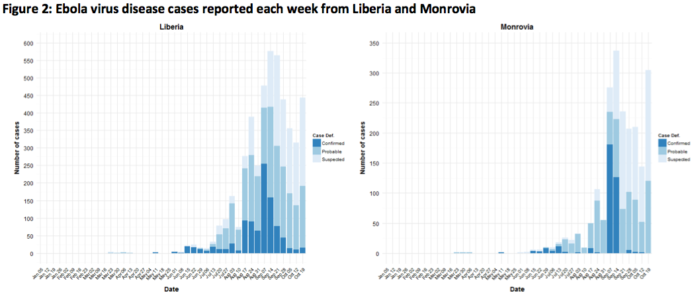Ebola Has Killed at Least 5,000 People

A child, center, stands underneath a signboard reading ‘Police order quarantined home unauthorised should keep off’ as a family home is placed under quarantine due to the Ebola virus in Port Loko, Sierra Leone, Wednesday, Oct. 22, 2014.
With the first-ever U.N. emergency health mission now underway, more resources are starting to flow to the Ebola-stricken nations as well as neighboring countries that are at risk of importing the disease across porous borders and trade routes. However, the work of the U.N. Mission for Ebola Emergency Response, or UNMEER, is still tracking well behind the spread of the disease, particularly in Sierra Leone and Liberia.
For example, according to WHO data, Liberia has just 620 Ebola virus treatment beds available, far short of the 2,690 that are needed. Sierra Leone has just 29% of the beds it needs to meet a U.N. goal of isolating at least 70% of Ebola cases by Dec. 1. The U.N. is also running short of medical teams to staff the Ebola treatment centers, track down all known contacts of Ebola patients, and perform other critical tasks.
The situation in Liberia, which has been hardest hit by the outbreak, remains dire. There were 444 confirmed, probable and suspected cases recorded there just during the past week — the highest number of any of the past four weeks, and the fourth-highest since the outbreak began. This number may actually have been well above 1,000, though, since WHO says many patients are being treated (and dying) at home due to the lack of hospital capacity.

Image: Ebola cases reported each week from Liberia (left) and Monrovia (right), including undercounted cases in light blue. World Health Organization
In parts of Liberia, such as Lofa, which borders the district of Gueckedou in Guinea, the number of new cases continue to be on the low side. “Reports from observers suggest this is a genuine decline as a result of control measures,” the WHO report states.
Yet in neighboring Sierra Leone, the city of Kenema has seen an increase in cases, after disease transmission had been slowing. “All districts of Sierra Leone have now reported at least one probable or confirmed case of EVD since the start of the outbreak,” WHO said, using the acronym for “Ebola Virus Disease.” In Guinea, the outbreak has been spreading toward the porous border with Cote d’Ivoire.
“I’m not hearing any real enthusiasm about the numbers, except for those declining Lofa numbers,” said Adia Benton, an anthropologist at Brown University who studies infectious diseases.
“And even people are very cautious about what it might mean that those numbers have declined,” Benton said. “Will new cases pop up elsewhere? Will people let down their guard as in earlier phases?”
The health agency says that while Guinea, Liberia and Sierra Leone are “rapidly expanding” their work to track down the people who had contact with Ebola patients — a process known in epidemiology as “contact tracing” — the teams are still stretched far too thin. According to the U.N. agency, as many as 20,000 contact tracing staff may be needed to meet the goals of isolating 70% of patients by Dec. 1, and 100% of patients by Jan. 1.
Aggressive contact tracing efforts helped contain Ebola outbreaks in Nigeria and Senegal. In Nigeria’s case, one initial Ebola patient, who traveled there after initially being treated in Liberia, led to 20 cases and 11 deaths. Yet because of its quick action, the most populous country in Africa was declared Ebola-free on Monday.
In an effort to quickly stop any spread of the disease in Africa, WHO and UNMEER are helping train and prepare other African nations that either border the three countries hardest hit by Ebola, or are linked to them through extensive trade networks, in case the illness spreads regionally. These countries include Benin, Burkina Faso, Cameroon, Central African Republic, Cote D’Ivoire, Democratic Republic of Congo, Gambia, Ghana, Guinea Bissau, Mali, Mauritania, Nigeria, Senegal, South Sudan and Togo.
Earlier this month, a top WHO official said the outbreak may escalate to 10,000 new cases per week by December.
WHO is meeting in Geneva on Wednesday and Thursday to take stock of its measures to combat the Ebola outbreak and mobilize more resources.
